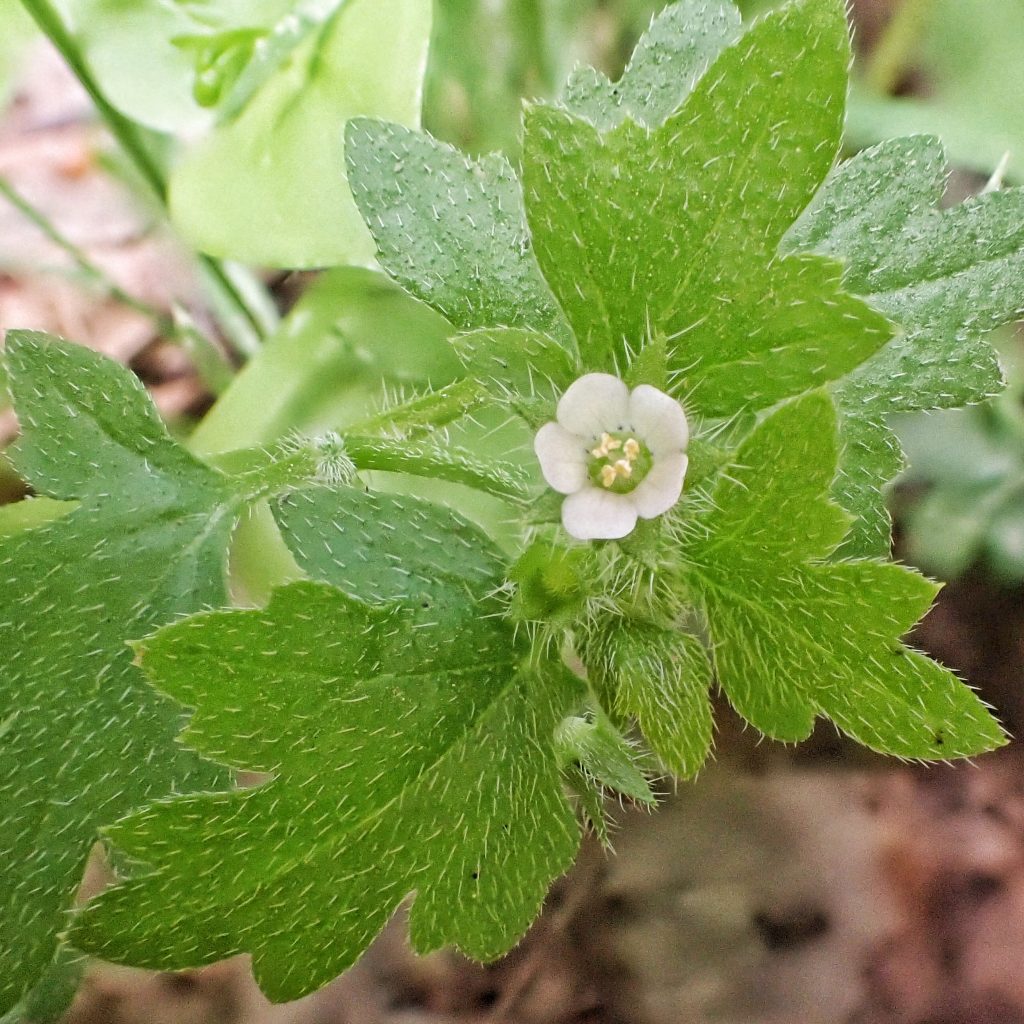
So, this plant is an example of a particularly egregious and embarrassing misidentification from the dawn of my interest in wildflowers. What happened was that, while paging through “Wildflowers of the Pacific Northwest” in search of something else, I happened upon the entry for Collomia heterophylla, and thought ‘that looks like the leaves of that other little plant I saw today’, and when I noted that the flowers could be white I decided that that must be it, and didn’t do any further investigation. So, for at least the last decade, I’ve been thinking, and worse yet telling people, that these were Collomia heterophylla.
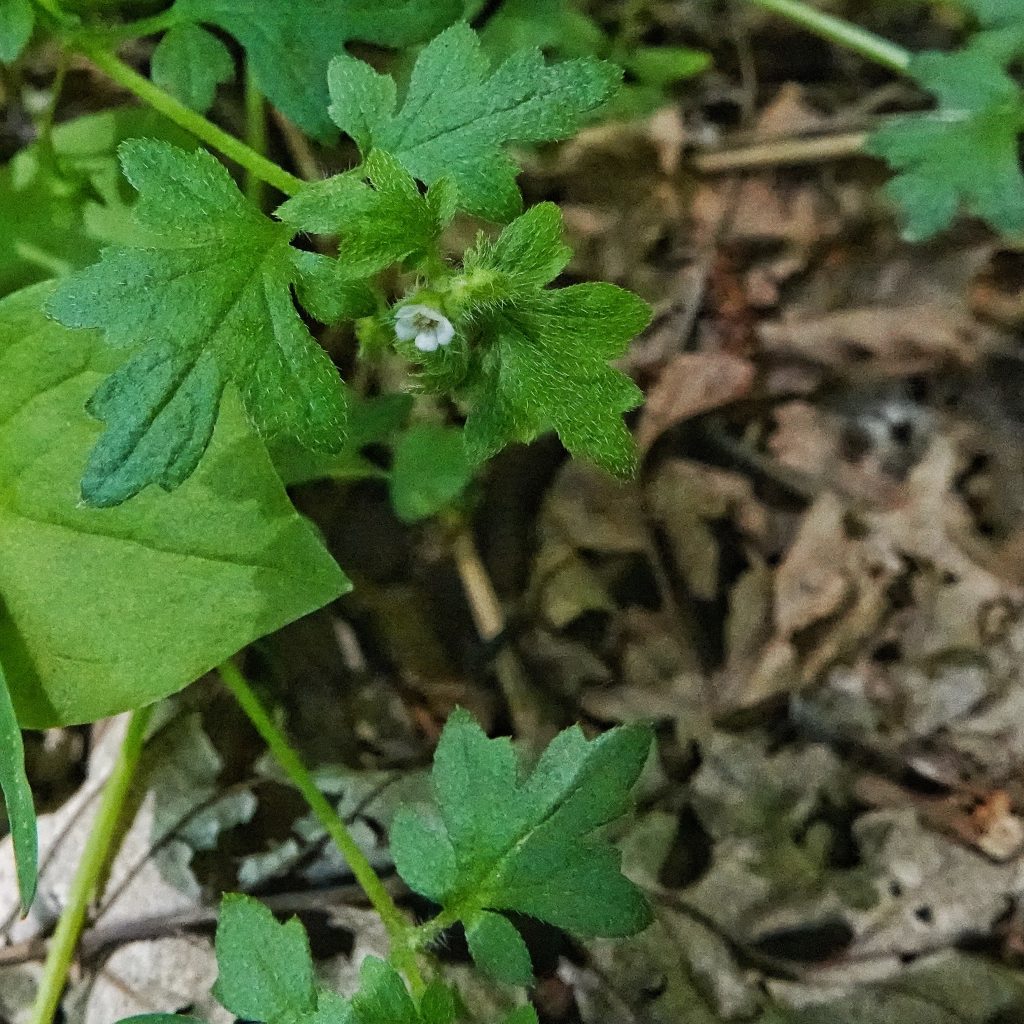
But recently, when looking up Hydrophyllum tenuipes (Pacific waterleaf) in “Wildflowers of the Pacific Northwest”, I saw below it a photo of Nemophila parviflora and suddenly realized that that was a much better candidate for labeling the little oak-like leaved plant with the tiny flowers that I’d been calling C. heterophylla. Fast forward a few weeks to my first trip to Canyon Creek, and my finding of large patches of these flowers, and I was able to see that it really wasn’t very similar to C. heterophylla, starting with the size and shape of the flowers, and the opposite, rather than alternate, pairing of the leaves. I could also rule out Nemophila pedunculata, because the flower petals lacked veins, but it wasn’t until I was able to look it up in “Flora of the Pacific Northwest” that I could be sure that those were the only two Nemophila in our region that have such tiny flowers.
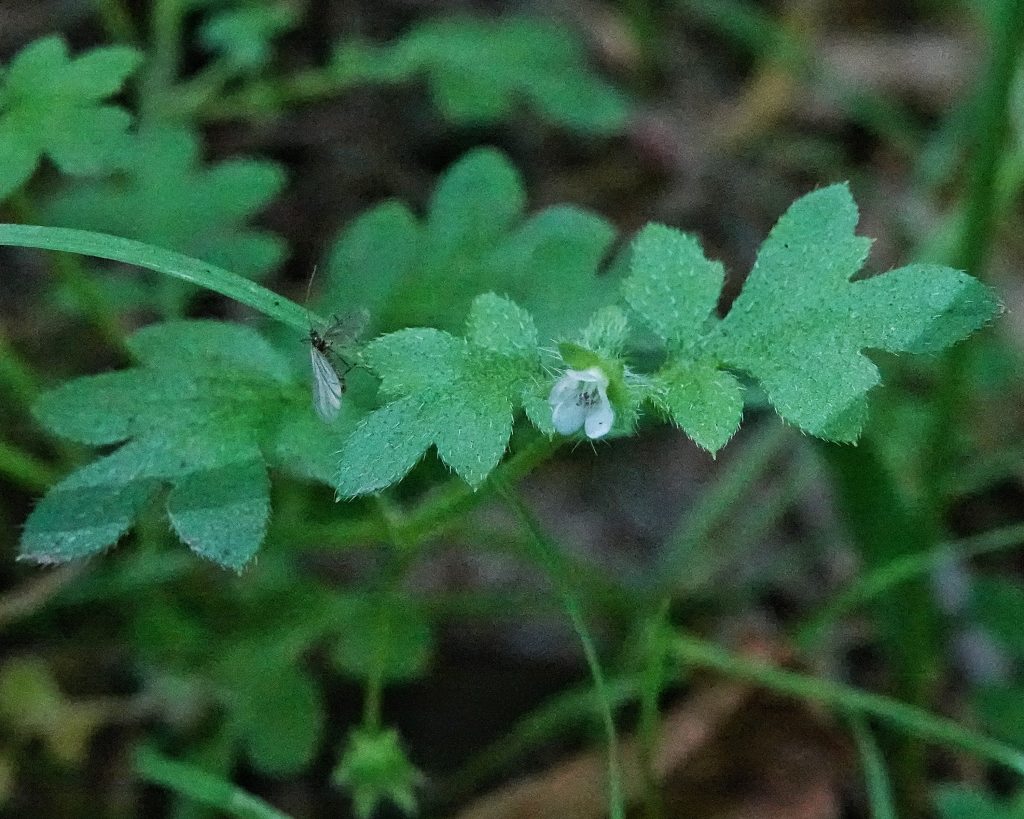
So, my apologies to these members of the family Hydrophyllaceae for calling them by the wrong name all these years, and to my friends and family for misleading you, and for contributing to the confidently-stated-but-ignorant epidemic of misinformation which is sweeping the planet of late, and that is slowly but surely suffocating society, rational discourse, and the world itself.
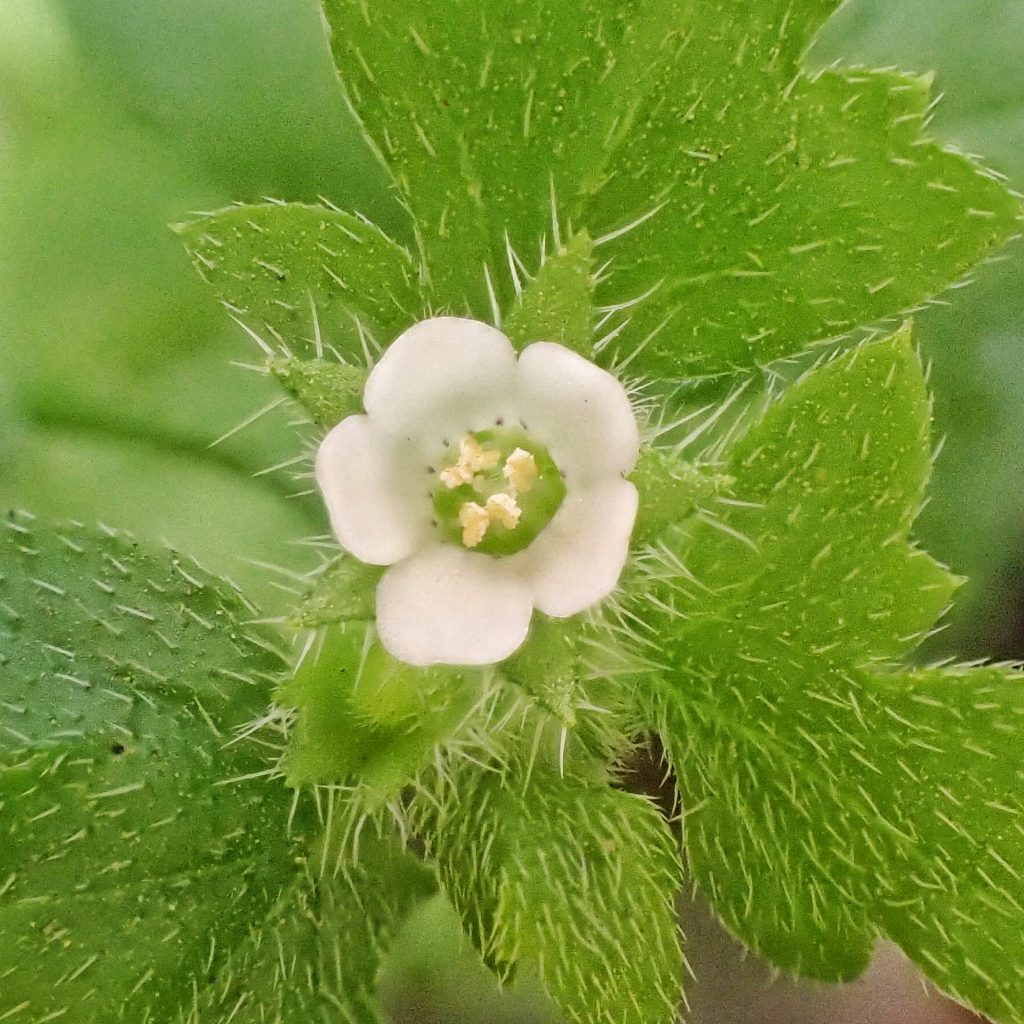
Ethnobotany– I can find no ethnobotanical uses for this plant.
Description– “Height: 6-24 inches…Sprawling stems to 2 ft. Stems delicate, branched, soft-haired or hairless. Lower leaves opposite; upper leaves alternate. Leaves pinnately divided, with 5 toothed dissimilar lobes. Flowers small, bell-shaped, with white or pale blue petals, solitary on delicate stalks from axils of stem and leaf…Var. parviflora leaves are both opposite and alternate, thin, deeply cut, 5-lobed, lower pair often to central vein; lobe tips with very sharp point at tip; grows at low elevations west of Cascade Mountain Range. Var. austiniae leaves are all opposite, shallowly lobed or coarsely toothed; grows mostly east of Cascade Mountain Range.” Nemophila parviflora | Small-flowered Nemophila | Wildflowers of the Pacific Northwest
“Wood’s nemophila is a small, easy to miss wildflower with prostrate or procumbent stems from 5-15 cm long. The leaves are mostly opposite, ovate, and pinnately 5 lobed with the blade longer than the leaf stem. The leaf blades range from 1-3.5 cm long and .8-2.5 cm wide and the lower lobes are often as large or larger than the terminal lobe.
The flowers as the species name parviflora indicate are small, ranging from 2-5 mm wide. The flowers are short, tubular, 5-petaled with white or lavender coloration. The corolla is about equal to or slightly longer than the bristle-edged calyx lobes.” Smallflower Nemophila, Small-flowered Nemophila, Wood’s Nemophila: Nemophila parviflora var. parviflora
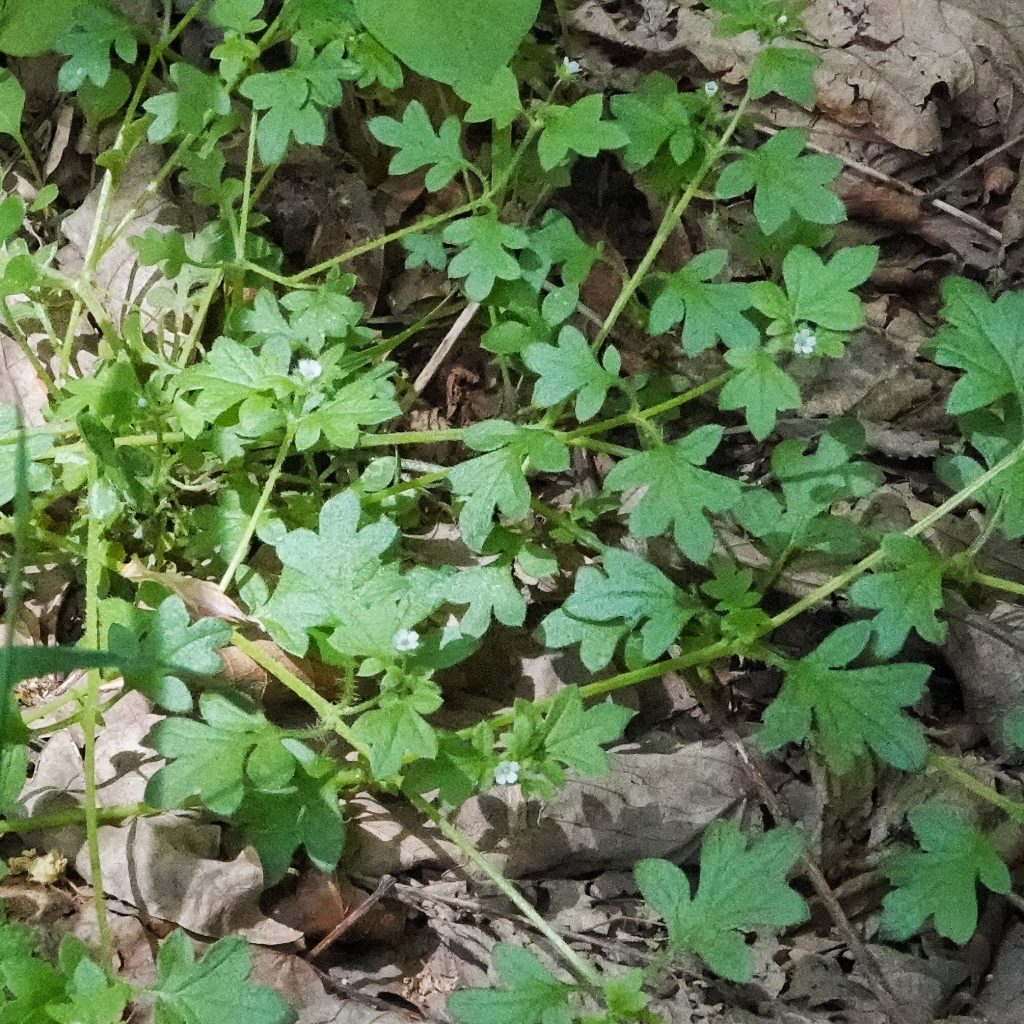
Similar species– Nemophila pedunculata has flowers with dark veins and spotted petal bases, and grows in moister and more open areas; other Nemophila either have all leaves alternate, or much larger flowers; Collomia heterophylla has alternate leaves, and the flowers are shaped differently and are much larger.
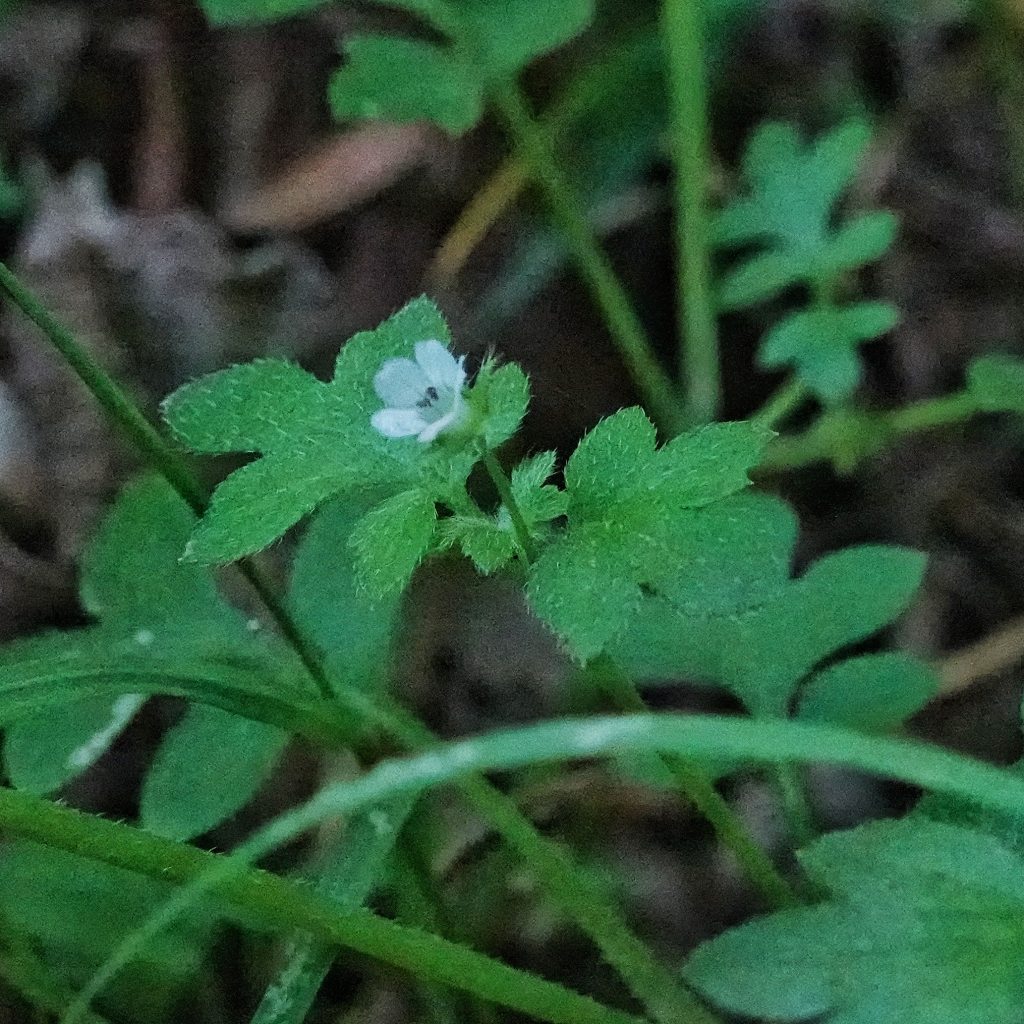
Habitat– “Shady, wooded slopes, forest openings and edge, from low to middle elevations in the mountains.” Nemophila parviflora – Burke Herbarium Image Collection
Range– Native; “Wood’s nemophila may be found from southern British Columbia south to California and east to central Idaho and northern Utah. In the Columbia River Gorge, variety austinae may be found near the Klickitat River and east at all elevations while variety parviflora may be found from the western end of the gorge east to about Lyle, WA between 100′-3000′.”Smallflower Nemophila, Small-flowered Nemophila, Wood’s Nemophila: Nemophila parviflora var. parviflora
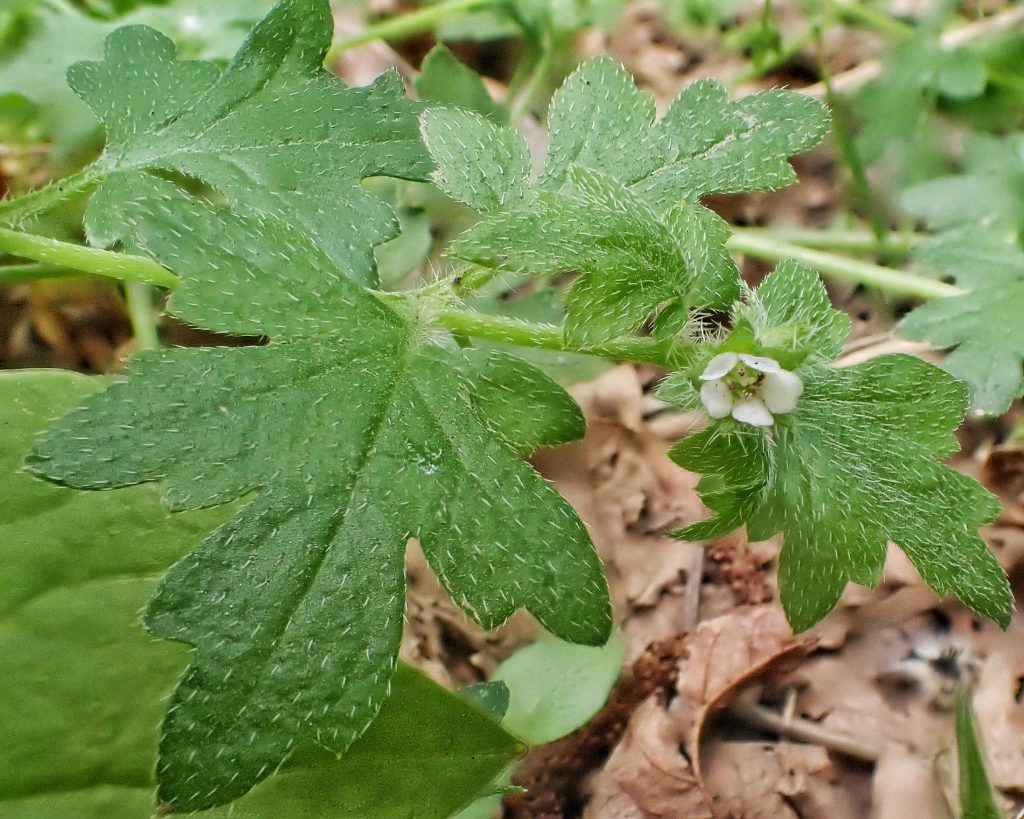
Eaten by– In “Leafminers of North America – 2nd Edition” (©2022) Charley Eiseman lists larvae of the leaf mining fly Phytomyza nemophilae as using this plant; Annaphila pustulata may use this as a larval host; nectar source for Gray Hairstreak butterfly; I can find no information on vertebrates that may feed on this plant.
Reproductive timing– Flowers from April through July, depending on elevation and latitude.
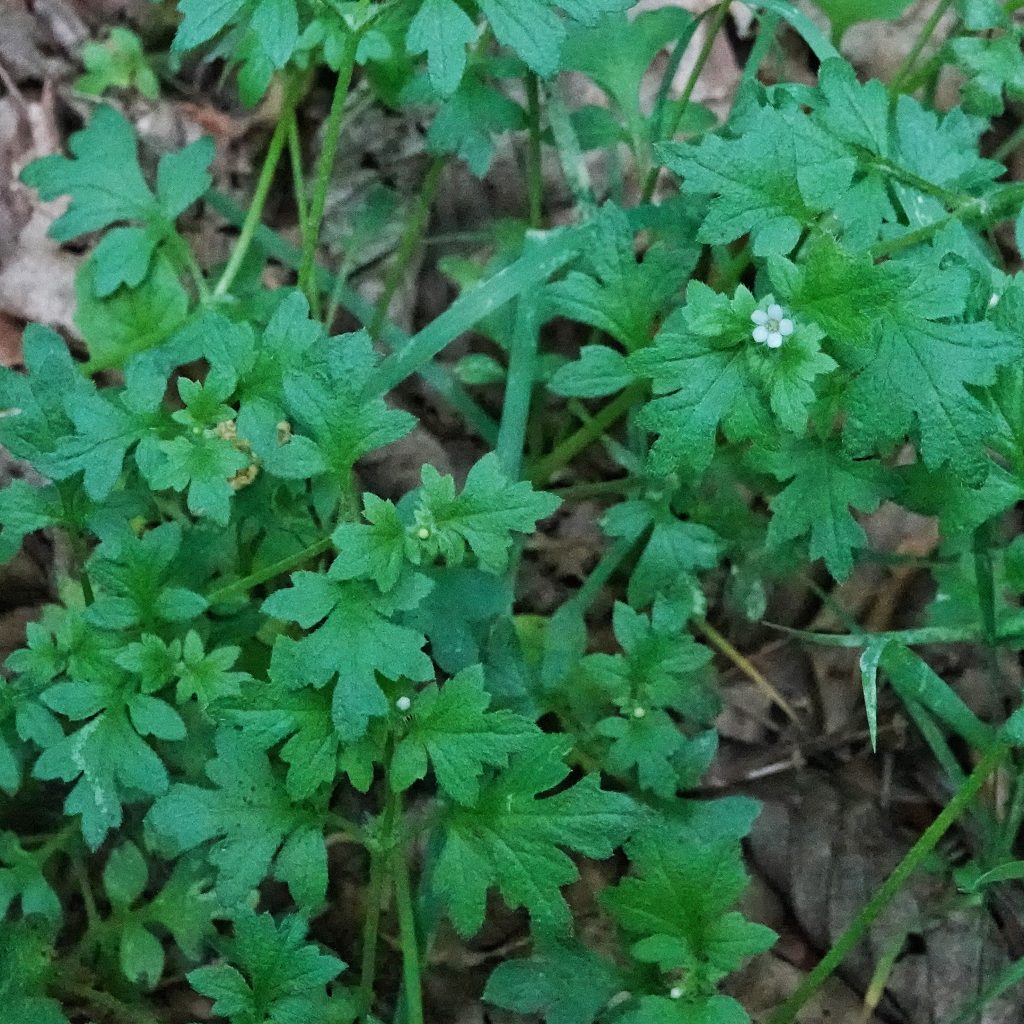
Etymology of names– Nemophila is from the Greek words for ‘grove loving’, a reference to the woodland habitat of most members of this genus. The specific epithet parviflora is from the Latin words for ‘small flower’, a highly appropriate epithet for this tiny flowered species.
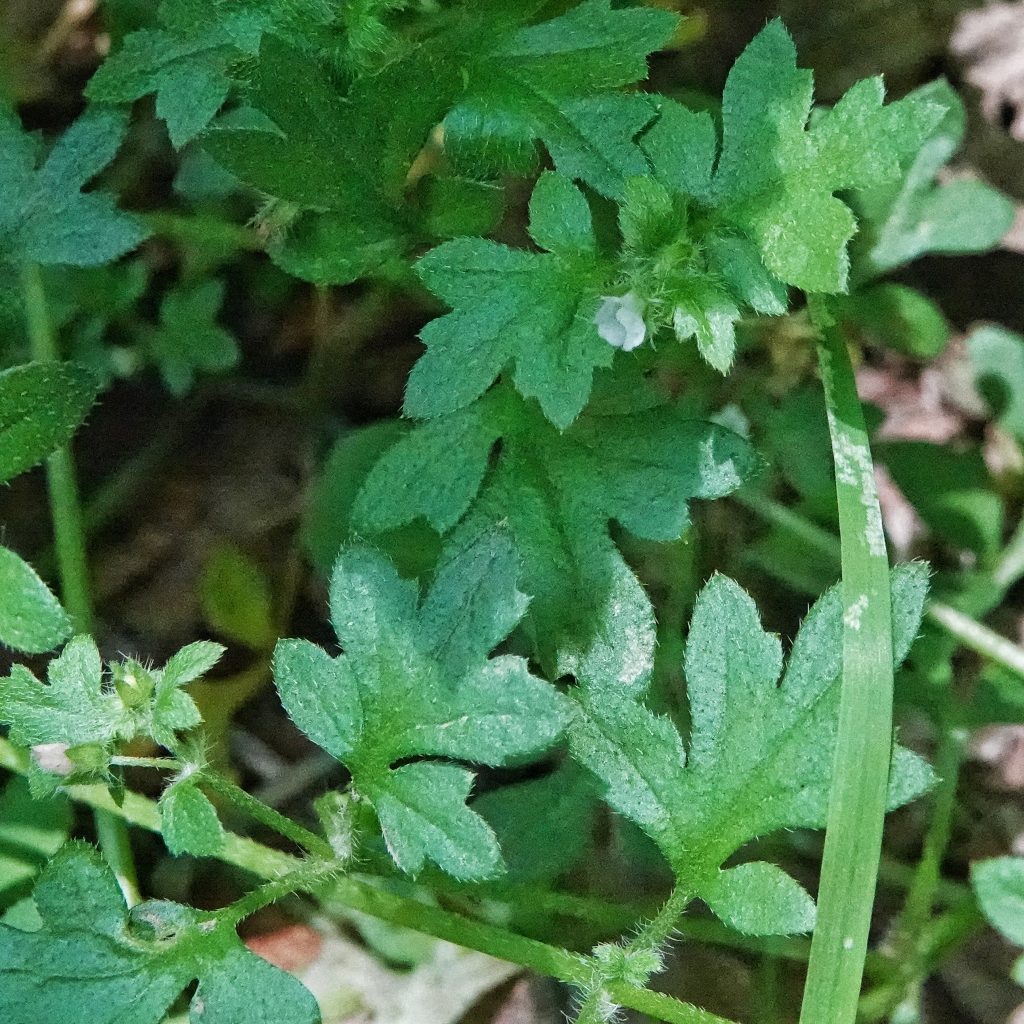
Nemophila parviflora | Small-flowered Nemophila | Wildflowers of the Pacific Northwest
Nemophila parviflora – Burke Herbarium Image Collection
Smallflower Nemophila, Nemophila parviflora
https://en.wikipedia.org/wiki/Nemophila_parviflora
OregonFlora Nemophila parviflora
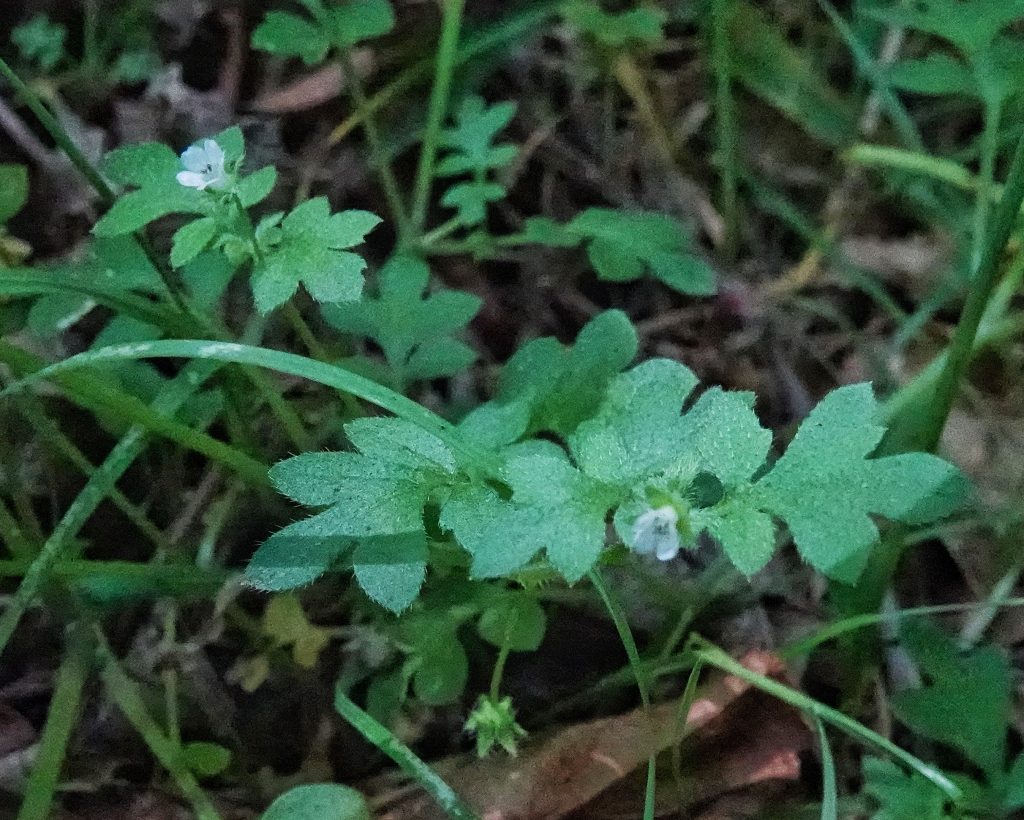
I think the world will forgive you 😉
Thanks, Kat!